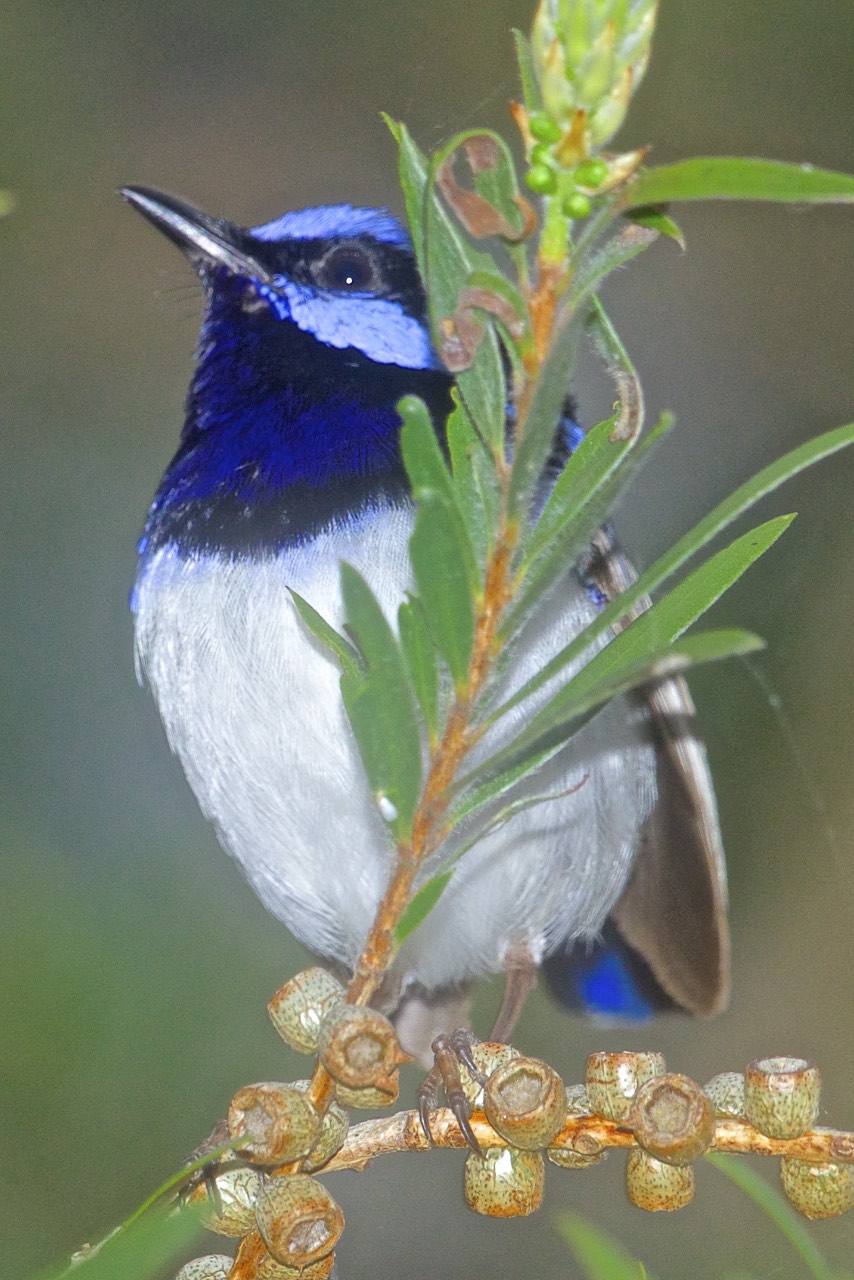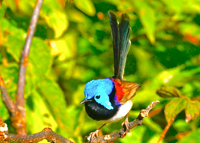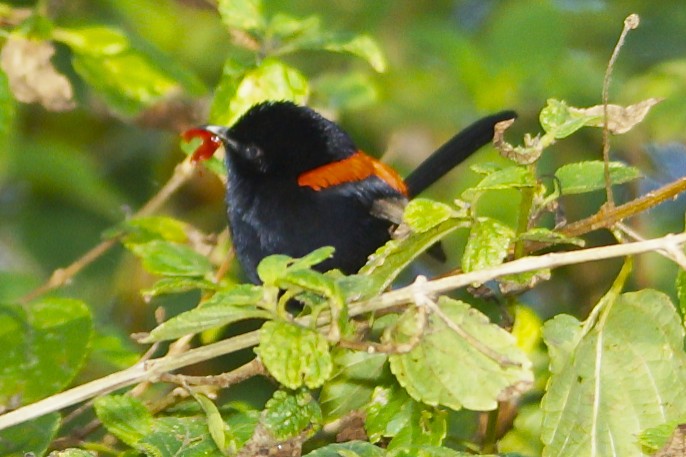The presence of Fairy-wrens breeding on a property is always an indicator that there is good habitat as they are one of the first groups of birds to move away if conditions are poor. We have three groups of Fairy-wrens on our property and each group have been fascinating to watch over the years: Superb, Variegated and Red-backed.
We have three families of Superb Fairy-wrens that regularly nest on the property. One pair nests near our house and they are not very successful as they spend much of their time attacking the windows of the swimming pool room and our car side mirrors.
The next family, usually a breeding pair with two or more assistants, breeds behind a shade house along the fence line in a Callistemon bush about 2 metres off the ground and they raise two lots of young successfully each year. They feed on insects from a wide range of shrubs and even quite high up in trees.

One of Ed’s Superb Fairy-wrens
The third pair nests on shrubs on the road verge and, while they are in excellent condition, they seldom raise a family as they are put off with the traffic and dogs and cats from the neighbours’ properties.
The Variegated Fairy-wrens live in the drier parts of the property and they generally forage on insects. They breed in the Lantana on the SEQEB easement or on the drier Western facing slopes over the back of our property.

Variegated Fairy-wren – courtesy of Ed Frazer
They are more secretive and range over quite large overlapping territories so I am not sure how many breeding groups there are. Usually they have only one coloured male with a number of juveniles including some young males with blue tails. Often there are 5 or 6 in the troupe. They usually breed successfully, raising 4 young twice a year.
The Red-backed Fairy-wrens are the most interesting of the three. They have smaller territories and feed much more on the insects in the grass than the other two. Usually there is only one male to about 4 females and juveniles. Sometimes there are two coloured males and often they associate with the Variegated Fairy-wrens.
I had an interesting experience where 4 fully coloured males were showing off to a group of females. Two of the males had a petal each of what we call “Wild Salvia” in their beaks. The petals are bright red and I assume they were trying to enhance their similarly red coloured backs. While this is not a common practice I have seen it before.
One day when the Wild Salvia was not in flower I saw a Red-back carrying an orange Lantana petal in its beak. Maybe it was colour blind, but birds perceive colour differently to us.

Red-backed Fairy-wren on Ed’s property

